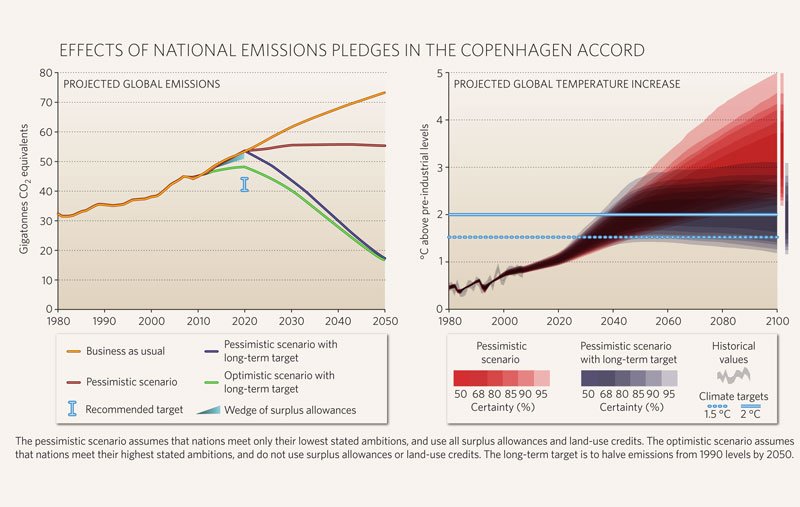Copenhagen Accord - missing the mark
-----------------
Current pledges to reduce emissions are no where near good enough to keep the planet's warming to below 2°C, argue Joeri Rogelj, Malte Meinshausen and colleagues in an opinion piece in Nature this week.
They analyzed the pledges made in conjunction with the Copenhagen Accord, taking into account a few major loopholes that will likely make emissions worse. First, they say, most nations will only meet the higher ends of their emissions reductions targets if there is a better international agreement in place, so the lower ends of their targets are more realistic.
Secondly, many nations have banked surplus emissions allowances from 2008-2012 that they are likely to use after 2012. Thirdly, some nations will probably be permitted extra allowances thanks to land use change, such as planting forests, that go beyond actual emissions savings. All of this paints a poor picture of future emissions (see figure).
The team estimates that emissions will reach 47.9 to 53.6 Gigatonnes of CO2 equivalents by 2020 -- 10-20% higher than today's levels, and higher than the 40-44 Gigatonnes that the team estimates would realistically keep warming to below 2°C. Even if nations commit to halving their emissions by 2050, there is still a 50% chance that warming will exceed 2°C by 2100, they report. It is critical, they argue, that something better than the Copenhagen Accord be established in the next year or two.
 |
| Figure: HISTORICAL DATA: P. BROHAN ET AL. J. GEOPHYS. RES.111, D12106 (2006) |
---------------

